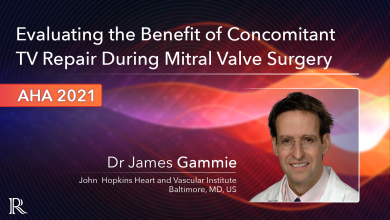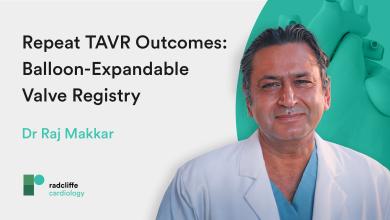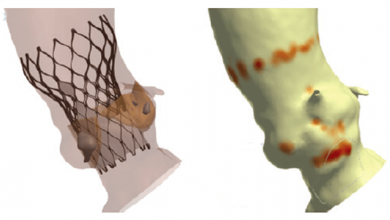Search results
Author(s):
Ahmad Edris
,
Yosef Manla
,
Firas Al Badarin
,
et al
Added:
1 year ago
Author(s):
James Gammie
Added:
2 years ago
In this short interview, Dr James Gammie (University of Maryland Medical Center, MD, US) discusses the findings from surgical trial assessing the benefit of concomitant tricuspid repair during mitral valve surgery. The trial, presented at AHA 2021, demonstrated that at 2 years, TA had no impact on MACCE, survival, or QOL.
Discussion Points
1. Reasoning for this Study
2. Study Design and…
View more
Author(s):
William O’Neill
Added:
3 years ago
Author(s):
Raj Makkar
Added:
6 months ago
In this insightful interview, investigator, Prof Raj R Makkar(Cedars-Sinai Heart Institute, US) joins us to discuss the outcomes of repeat transcatheter aortic valve replacement with balloon-expandable valves.
Prof Makkar and his team used the Society of Thoracic Surgeons/American College of Cardiology Transcatheter Valve Therapy Registry to address a series of questions regarding the safety…
View more
Author(s):
Arditya Damarkusuma
,
Paula Mota
,
Billal Patel
,
et al
Added:
1 month ago
Author(s):
Walter Desmet
Added:
3 years ago
Since its introduction in 1977, the long-term benefits of percutaneous coronary intervention have been limited by the phenomenon of restenosis, i.e. the recurrence of significant stenosis at the site of intervention. While in restenosis after plain balloon angioplasty roughly two-thirds of the late lumen loss is due to negative vessel wall remodelling, the late lumen loss after stent implantation…
View more
Author(s):
Cameron Dowling
,
Robert Gooley
,
Liam McCormick
,
et al
Added:
2 years ago
Author(s):
Michael Tittelbach
,
Tobias Diener
Added:
3 years ago
Since the introduction of drug-eluting stents (DES), physicians have tried to find a delicate balance between achieving a highly effective result without compromising the safety of the patient. Various concepts have been introduced into the marketplace in the attempt to identify the optimal combination of characteristics; however, until now very little attention has been paid to combining a…
View more
Author(s):
Kevin S Tang
,
Shoujit Banerjee
,
George Tang
,
et al
Added:
4 months ago
Author(s):
Tanush Gupta
,
Michael Weinreich
,
Mark Greenberg
,
et al
Added:
3 years ago
Percutaneous coronary intervention (PCI) is the most commonly used revascularisation modality for obstructive coronary artery disease.1 Despite significant advances in PCI over the past 40 years, severe coronary calcification remains a challenge for successful PCI.2,3 Up to 20% of patients undergoing PCI are estimated to have moderate to severe coronary calcification.4,5
Heavily calcified…
View more
















 « First
« First